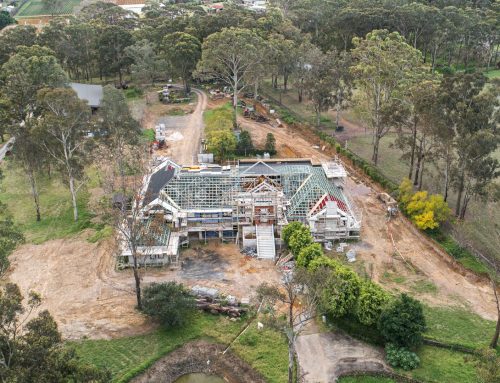Building and renovating your home can be exciting and stressful. However, if you’re planning a development in New South Wales, you may need (yes, “may”) to apply for approval first. A Development Application (DA) is a merit-based assessment conducted directly through the local Council.
What is a Development Application?
A development application is a form submitted to the local Council, alerting them to the proposed development and requesting permission to carry out that work. It is also called a DA. Depending on its type, a DA will outline all aspects of a proposed project, including the proposed design, the variety of construction materials, the construction method, and the schedule for completion.

What requires a development application in NSW?
Almost any building in NSW, but not quite. While some construction work does not require a DA (I will get into this in a little bit), most building work does. This includes additions, demolitions, interior renovations, swimming pools, fences, and other structures. A DA is required even if a homeowner is replacing a front door.
Depending on your development’s size and potential effects (traffic, noise, privacy, and solar access) on neighbouring properties, you may need some authorization or approval. Developments may be subject to one of three evaluation methods: exempt development, complying development, or development application.
Development Application vs. Complying Development Certificate
You can obtain building approval through a development application or a complying development certificate.
• A local council approves the development application. To obtain development consent, you must go through the development application process through the Council and then a construction certificate approval through the Council or a private certifier. The benefit of going for a development application over a complying development is that it is a merit-based evaluation. Sometimes, you can get more than what is typically allowed on a site.
• Complying development certificate is an expedited approval process without the need to go through the local Council. The benefit of going through complying development is that the approval process is generally much faster, and there is no construction certificate stage. Meaning once approved, you can start the build right away. The only disadvantage to complying with development is that it is state legislation, and you must comply with all rules and regulations the code sets.
Exempt development: When a Development Approval is not needed?
Exempt development is a development that will not need any approval from a consent authority such as the Council. These include small construction projects or renovations that don’t require planning permission or building permits. For example, garden sheds, repairing a window, or painting a house, can be considered exempt development. Approval is unnecessary if the proposed work meets all of the requirements of exempt development standards.
A step-by-step guide to getting your DA approved
For many projects, a DA would be preferred over a CDC because the project or site may have unique requirements or needs that fall outside the CDC codes.
Preparing a project for a DA can sometimes be a complicated and daunting process; we have broken down the function below into simple steps that a general DA process should follow.
• Design Stage – You need to determine which Council your site is located in. Each Council has a different set of requirements you must follow and comply with. You can vary from these requirements; however, it is still advised to be as compliant as possible. Once your design is finished, you will be ready to move on to the next stage.
• Preparing your DA – You will need to formalise your design into a drawing set of floor plans, elevations, sections, and site plans. You will also need to compile documents like a statement of environmental effects, site analysis, and survey. Other methods, such as landscape plans, Bushfire assessment reports or arborist reports, etc., may be required from external consultants. The type of information accompanying a DA will vary depending on the proposal and the site.
• Lodgment and Assessment – You are ready to submit your DA to the local Council. Once the application form has been filled out, you must lodge all relevant documentation into the NSW planning portal. Once installed, it may take up to 6 months in Council for assessment. During this time, they will notify your neighbours. If the Council requires any additional information or documentation or changes to the design, they will send a request for further information, which you will have a short period to address.
• Determination – If the Council approves your DA, congratulations, you will be awarded development consent. Alongside council-stamped plans, they will have a document outlining the consent conditions that define the requirements that must be met and any design changes that have to be made before construction can start. If your DA is denied, the Council will provide a document outlining the reasons for refusal, and you may resubmit the application with the issues addressed. You may file an appeal with the Land & Environment Court.
• Construction Certificate – You now have DA-approved plans and want to start construction. You will be required to meet consent conditions set out by the Council and submit an application for a construction certificate. This application, however, can be assessed by the Council or a private certifier. Upon approval and all conditions being met, construction can begin.
Have the best project development experience
Development approvals are an essential part of any construction project. Anyone building a house in NSW will need approval and will have to go through CDC or DA to have the project approved. Getting approval for your project can be a long, tedious process, and you’ll want to start as early as possible to avoid unnecessary delays. Make sure you collaborate with a trusted designer to design and build the home of your dreams and guarantee you take proper legal steps to ensure a smooth and straightforward process for your project.



